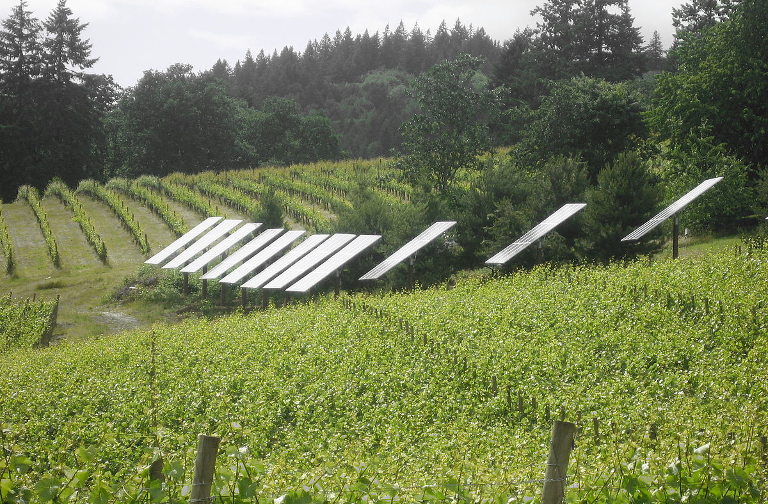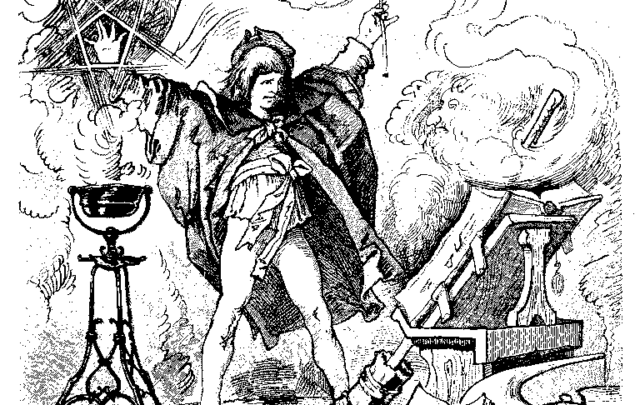As the U.S. considers how to reopen, stimulate, and recover its economy post-pandemic, how radically could it be reimagined?
As an archipelago, Hawai‘i was necessarily self-reliant for much of its history, made up of communities supporting themselves with the resources that originated on and in the waters around the islands. Today, in contrast, the state’s economy relies on tourism and the U.S. military, which makes it particularly vulnerable to disruptions caused by the crises like the coronavirus and climate change.
“In Hawai‘i, we lived for generations on an island, without any imports, completely sustainably,” says Kaniela Ing, climate justice campaign director for the People’s Action Institute. “And we’re at a point now [where] if the docks shut down and it only lasts for two days, we’ll starve.”
He says the current economic paradigm is no longer sustainable, as inequality grows greater year after year. But rather than looking all the way back to Indigenous Hawaiian roots, Ing, who is in his early 30s, says it’s enough to look back to his parents’ generation. He uses the growing difference between incomes and house prices to illustrate. Since 1985, income in the state has grown about 1.9% per year. In that same time period, the average cost of a house in Oahu, for example, has grown about 5% per year. That makes the middle class increasingly out of reach for many, and the wealth gap is growing.
“People think we’re confined to this paradigm,” Ing says. But, he argues, in reality, the economy is simply a system to determine who gets what—where resources land. “We can shape it however we want,” he says.
Ing sees the “double pandemic” of COVID-19 and the ongoing health effects of environmental injustice as an opportunity in Hawai‘i—and the U.S. as a whole. He says that in the short term, we need money circulating in the economy to get people up and out of this recession, especially if it drags on long enough to become a full-blown depression. Long term, he says, we need to invest in building a new kind of economy that serves people equitably and sustainably.
“History shows that in these moments of shock comes massive societal realignments,” Ing says. But those realignments have historically helped certain people and left others out. The original New Deal of the 1930s reinforced racial discrimination in employment, wage protections, and housing, and the Reaganomics of the 1980s mainly benefited the already rich and powerful. “So it’s up to people—normal working people—what society’s going to look like coming out of all this chaos,” Ing says.
That’s where the idea of a just transition comes in. Broadly, the term describes an intentional shift toward a society in which the economy and the environment can thrive simultaneously, with social structures in place to make sure equity takes priority in the process as well as the outcome. Plans along these lines have been promoted under many monikers, like a Green Stimulus and a Green New Deal, and they’ve been getting even more attention in 2020. The Climate Justice Alliance even brought forward a plan that outlines their frontline vision for a regenerative economy. Advocates for a just transition believe the social and economic upheaval of this year could be just what’s needed to make major change, and for that change to be more equitable this time around.
A Movement Over Time
Efforts to implement social structures to support workers and communities in the shift to a cleaner and more sustainable economy have been happening for decades. The just transition movement got its start in the 1990s, with labor unions trying to support members who had lost work as a result of new environmental regulations. In 2010, Anabella Rosemberg, then with the International Trade Union Confederation, wrote, “Job losses are not an automatic consequence of climate policies, but the consequence of a lack of investment, social policies, and anticipation.” By 2015, the term had made it into the preamble to the Paris Agreement, and by COP24 three years later, just transition got its own declaration.
As the finances of fossil fuels no longer make economic sense, and the cost of renewables goes down, some of the shift toward greener energy sources is going to happen regardless. And when industries change, even for the better, plenty of people are overlooked, left behind, or forced to move.
“Look at the devastation of coal mining in the Appalachians, which has led to the degradation of entire communities,” said Sean McGarvey, president of North America’s Building Trades Unions, to the Houston Chronicle. “If you want to push policies that will change the way people make a living, you have to put in place protocols that allow them to have the smoothest economic transition. You can’t just drop them off the cliff.”
The reality is that shifting away from our current dependence on fossil fuels is going to upend people’s lives in tangible ways. The existing infrastructure, while dirty and inequitable, does employ many, many people, providing them and their families with wages, benefits, and meaningful work. Entire economies and communities are built on polluting energy sources. These can’t all be swapped out for wind farms or solar arrays instantaneously, nor can workers be retrained for new jobs that exactly replace the old, one for one.
“We are not climate change deniers. We are not opposed to renewable energy,” McGarvey told the Houston Chronicle. “But we can’t transition to careers where people get a 50% pay cut.”
Advocates say an emphasis on front-line communities, families, and individuals who will feel the direct impact of these shifts in their jobs, lives, and identities is key. An oft-repeated phrase in just transition circles is, “Transition is inevitable. Justice is not.”
Why 2020 May Be Different
In 2020, we have already seen massive changes to the equation: The pandemic has pulled the floor out from under the economy, fossil fuels are waning in value and influence, and protests against police brutality have pushed abolition into the mainstream. As the U.S. continues to waffle on its coronavirus response—with every state making its own calculation about the value of opening an economy versus protecting people’s health—2020 could be the opening that proponents of a just transition have been working toward.
“This is a moment when people are fighting and winning for really radical transformation,” says Adrien Salazar, the senior campaign strategist for climate equity at Demos, a liberal think tank. Protests for Black lives have spread across the globe, and many cities are rethinking their police forces and how to fund them. “If we can work together in this moment, when people are becoming politically activated in ways we haven’t seen at this scale for a long time, then we can move people power against the old system—the entrenched system of fossil fuel money and White supremacy—to actually get things done.”
He points to the toppling of statues—and the racist symbolism that has been entrenched in the ideology of this country along with them. He is heartened by steps being taken to rethink police forces in cities such as Minneapolis and eliminate police forces altogether in schools like Oakland’s. Salazar says the coronavirus crisis has forced a broader recognition of the inequalities in society. “The veil has been pulled back. We have seen essential workers are putting themselves at risk and not receiving benefits that they need to sustain themselves and their families.”
As Salazar sees it, the solutions need to address the immediate needs for relief, as well as chart out a course for a longer, more sustainable recovery, with justice at the core. He sees this moment as an opportunity to invest dramatically in the social goods that would make life fundamentally better for a lot of people. “You can design policies and you can fight for solutions that not only deal with the problem at hand, whether it’s education or climate or health care, but that also address the inequalities in the system,” he explains. Salazar looks to the environmental justice bills passed New York and California as evidence of movement in the right direction and examples for others to build on.
He envisions a society of healthy communities with quality housing, equitable education and health care, better public parks, increased mobility, and access to shared transportation. “These are things that are fundamentally good for Americans,” Salazar says. “They also get us to a place where we’re making a dent on our reversing the climate crisis. I don’t see how you can say no to these things.”
A Broad Coalition
The recognition of the unique potential for a just transition in this historical moment isn’t limited to left-leaning organizers and think tanks, either. United Nations Secretary-General António Guterres recently acknowledged as much in an interview with Covering Climate Now.
“I don’t want to go back to a world where biodiversity is being put into question, to a world where fossil fuels receive more subsidies than renewables, or to a world in which we see inequalities making societies with less and less cohesion and creating instability, creating anger, creating frustration,” Guterres said. “I think we need to have a different world, a different normal, and we have an opportunity to do so.”
The concept is gaining traction at speed, but that doesn’t mean a just transition is going to be an easy process. The hurdles to achieving this transition are myriad, from entrenched systemic inequality to a global obsession with capitalism that sees even co-occurring planetary trauma like climate change, the pandemic, and racial injustice as potential boosts to the bottom lines of transnational corporations.
One consistent roadblock is the notion that transitioning to clean energy is a choice between people or the environment. But prioritizing jobs and the environment simultaneously has been central to the just transition movement from the start. Kate Gibbs, deputy director of the Engineers Labor-Employer Cooperative, a trades union, told Politico, “Yes, we’re pro-environment but … we also want to be able to afford to live here and have jobs here.”
For a transition to take, it needs to work in social and environmental terms. To this end, a coalition of labor unions and environmental groups, including both the United Steelworkers and the Sierra Club, has come up with a policy guide for state governments that includes these priorities in tandem. Their efforts to mandate labor agreements, invest in apprenticeships, and enforce inclusive hiring policies show that investments can serve both ends, but that takes time and money. And lots of it.
Back in March, the CARES Act injected $2.2 trillion into the U.S. economy, including one-time $1,200 checks sent to individual Americans. It’s now September, and monthslong efforts to nail down another economic stimulus bill in Congress are at an impasse. Ing asks: Is a stimulus going to invest in the same corporations and reinforce the same inequities, or is it going to get at the root of the problem?
“If we’re going to be spending trillions of dollars to restructure the way society works—which is going to happen, it’s happening regardless—let’s make sure that money goes to help people and not just the corporations,” Ing says. “We’re going to have to invest to get jobs back. They’re not all coming back naturally,” he says.
There are roads to be repaired, bridges to be built, trees and food to be planted, and, he says, the private sector is not meeting that demand. “We’ve got to make sure that infrastructure means renewables, a regenerative economy, and not just more of the same extractive practices.” And in the process, we need to make sure those communities originally built around fossil fuels are supported with new, stable, wealth-building opportunities. He says the priority should be on investing in communities, and that jobs should first go to people in ZIP codes that have been cut out in the past. (A person’s ZIP code is a good indicator of their opportunities in life.)
Community-Driven Solutions
Some say that piling climate and justice and health into the same agenda muddles the issues. But proponents say the issues are inextricably linked and that this intersectionality is key to making broad and lasting change.
“We have solutions like this all across the country at the community level: people who are innovating democratic governance, ownership of our energy systems, and how people can pull together to undo systemic racism, to end institutions like police,” Salazar says. He points to examples in New York, where he’s based: a community in Buffalo transforming an abandoned school building into a community center and affordable housing for seniors; New York City’s largest community-owned solar project under development in Brooklyn; activists successfully protesting the expansion of the Williams pipeline.
“These are the seeds in the seed bank of the society that we want to build,” Salazar says. “Perhaps we are going through the kind of trauma of a forest fire right now. I’m hoping that in the wake of this, what many groups have been building and investing in for years at the grassroots level are what are going to be the foundation of this forest.”
Teaser photo credit: Oregon vineyard in the Willamette Valley wine region utilizing solar power. Author: eyeliam https://commons.wikimedia.org/wiki/File:Solar_panels_in_Oregon_vineyard.jpg





